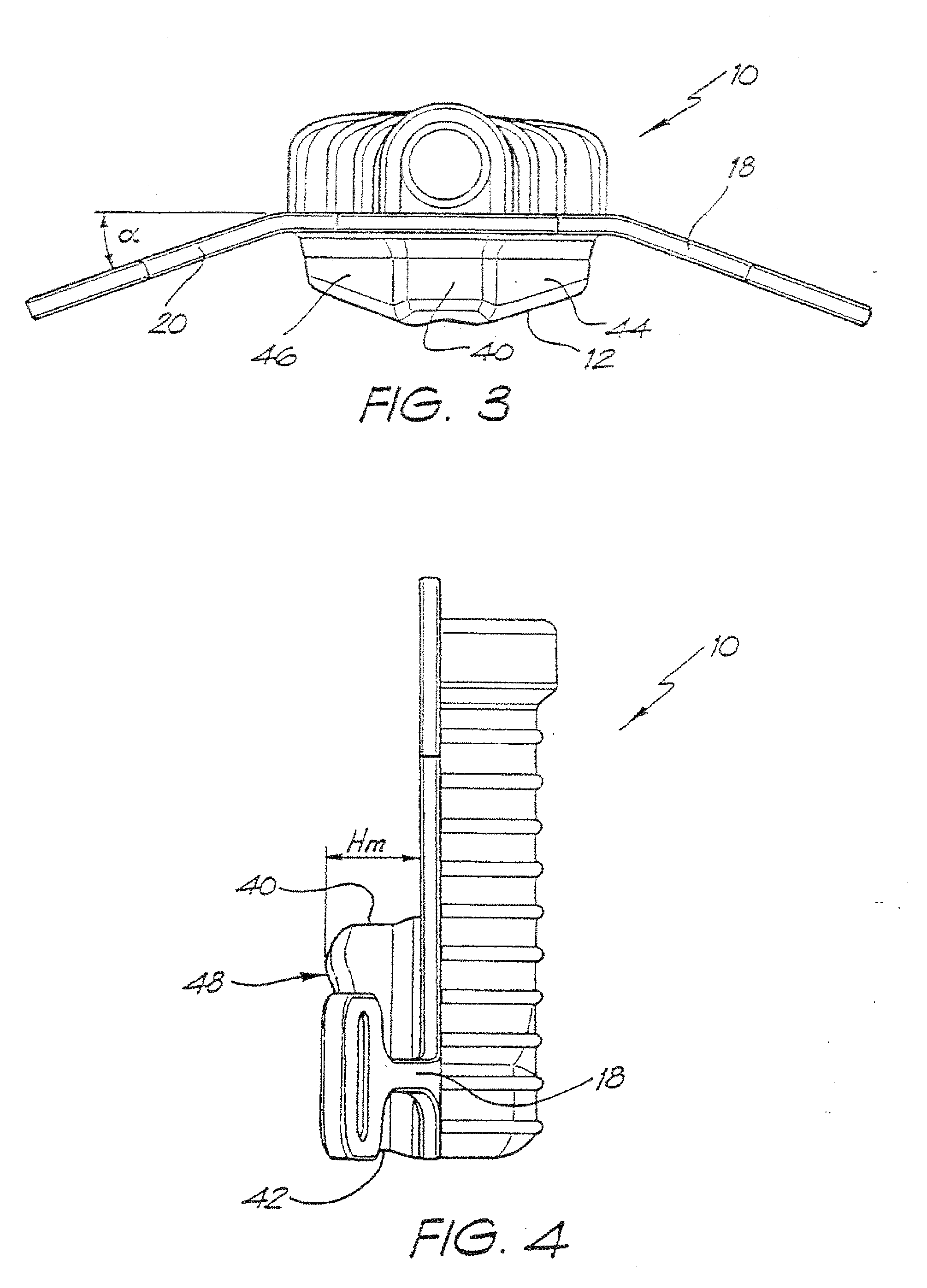Mask
a mask and mask body technology, applied in the field of masks, can solve the problems of mask seals being greatly exaggerated with infants, mask leakage of air from the mask, and infants being unable to manage the required readjustment themselves
- Summary
- Abstract
- Description
- Claims
- Application Information
AI Technical Summary
Benefits of technology
Problems solved by technology
Method used
Image
Examples
Embodiment Construction
[0070]Referring to the drawings, FIG. 1 shows a mask 10 suitable for use on three month old infants. In the described embodiment the mask is made from three moulded components a shaped membrane structure 12, a support structure 14 in the form of a combined support or backing plate and arms 14 and a manifold 16 which are glued together, although other constructions are possible. The components of the mask are preferably made from Silastic (Registered Trade Mark of the Dow Corning Corporation). However, other flexible and / or elastomeric materials could be used. In a particularly preferred embodiment the mask may be moulded (e.g. injection moulded) in one piece rather than assembled from a separately moulded components.
[0071]The centre of the support structure is a generally triangular plate from which three arms 18, 20 and 22 extend. The support structure is about 4 mm thick and is flexible but will retain its shape and is not floppy.
[0072]One of the arms 22 extends away from the top ...
PUM
 Login to View More
Login to View More Abstract
Description
Claims
Application Information
 Login to View More
Login to View More - R&D
- Intellectual Property
- Life Sciences
- Materials
- Tech Scout
- Unparalleled Data Quality
- Higher Quality Content
- 60% Fewer Hallucinations
Browse by: Latest US Patents, China's latest patents, Technical Efficacy Thesaurus, Application Domain, Technology Topic, Popular Technical Reports.
© 2025 PatSnap. All rights reserved.Legal|Privacy policy|Modern Slavery Act Transparency Statement|Sitemap|About US| Contact US: help@patsnap.com



